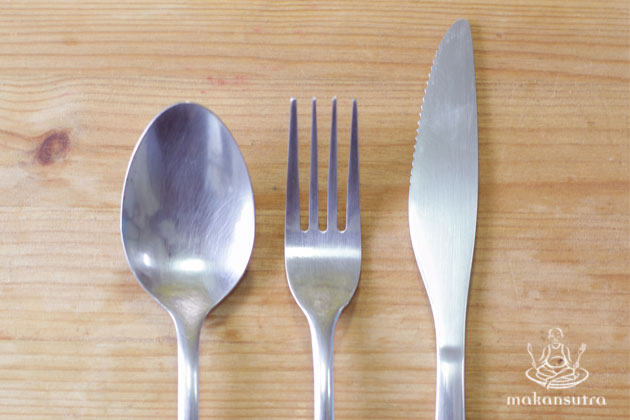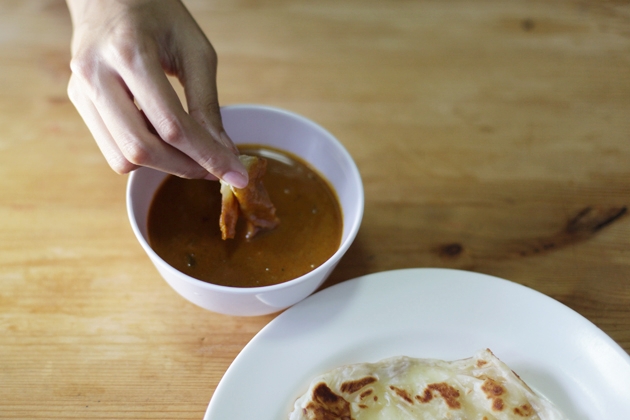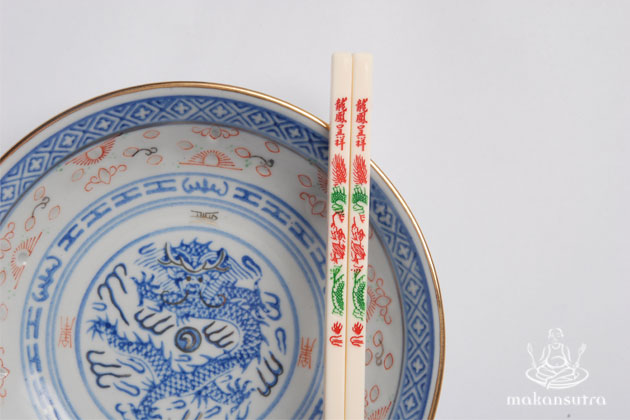
Why We Eat the Way We Do
By Shoba Nair - Thursday, May 28, 2015
Different cultures dictate not only different types of foods but also different ways of putting those morsels of food into the mouth.
Why does European dining dictate the use of forks, spoons and knives? How did Indians and Malays come to scoop the rice grains with their bare hands and why did the Chinese master the difficult art of pinching their rice with a pair of pincers?
Some history would tell us much.
Fork, Spoon and Knife
The story behind the fork, spoon and knife is nothing that is too surprising. It was pure pragmatism that drove Europeans to use spoons, knives and forks on the dining table. Our primitive ancestors may have started eating with just their hands, but soon had to design some basic tools to handle their food. For example, they used shells to scoop liquid-based foods and fashioned sharpened hand axes from raw materials they found, to cut the meat of the hunted animals. These basic tools evolved to the forms of spoons and knives we see today.

It was believed that forks were introduced only much later, with the first forks for dining made with two flat prongs, to poke into tough meat, changing to a slightly curved shape to accommodate soft food like peas only in the late seventeenth to early eighteenth century.
One dining boo-boo to avoid when trying to cut that piece of steak (besides flipping it across the room while tearing it apart!) is placing the fork with the prongs facing upwards, as you hold the knife on the other hand. This has nothing to do with superstition, but just simple logic: you would not want to hurt the poor waiter when he clears your plate.
Helping Hand
Traditionally, in Indian and Malay homes, bare hands are used to eat food, and this is not because of the cool American wave of convenience and informality or the primitive habits of early man. Interestingly, the use of hands, with use of no other dining cutlery, has its roots in deeply-entrenched spiritual beliefs.

According to ancient spiritual wisdom of India or the Hindu Vedic belief, food is perceived to not just feed the body but also the mind and soul, and hands are considered to be the precious organ responsible for feeding. There is thus much symbolism associated with the hands for this function, with each finger representing the five elements of space, air, fire, water and earth. It is believed that by eating with your hands, the five elements would transform food and digest the food well once it is ingested into the body. In fact, when picking up the food, only the fingers should touch the food, and not the whole palm.
Malays too eat most of their food with their hands, unless it is a soup-based or noodle item. One most important thing, according to the Islamic religion, is to eat with the well-cleansed right hand, as using the left hand is considered to be an impure act, given that the left hand is used for personal sanitary cleansing.
A Pair of Sticks
Apparently, chopsticks in China were used long before proper knives and forks for dining were invented by the Europeans. It became more widely used during the era when Confucianism, the teachings of the Chinese philosopher Confucius (551-479BC), started to gain popularity. Confucianism promoted non-violence, which prohibited use of cutlery that bore any sort of violence, such as knives. Chopsticks, which reflected the Confucius teachings of gentleness and benevolence, seemed like the best cutlery then for the dining table. Food was thus cut into small pieces before being cooked, so that morsels of food could be popped into the mouth easily, without needing any further cutting at the dining table, unlike the Europeans.

Why were bare hands not used? Well, most Chinese dishes during the era (and even now) involved dipping food into sauce and thus using hands to handle food would have been a messy affair, making chopsticks the perfect solution.
One thing you should not be caught doing with chopsticks, though, is to poke them into the rice, straight up, as that is symbolic of death, like joss sticks on a tomb.
What a person uses to eat can indeed be a window to a culture’s history and its intriguing beliefs. Yet again, food and all that it is about has proven to be more than a sustenance for the body, but also for the mind and soul.


